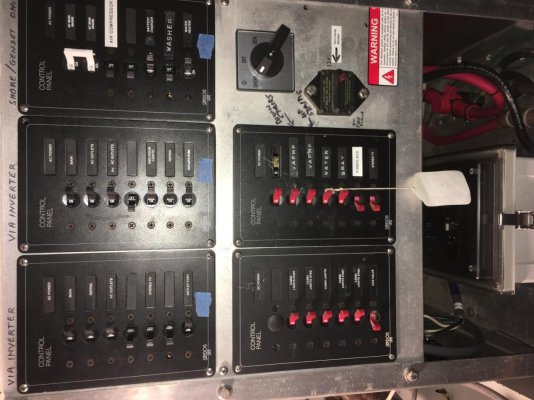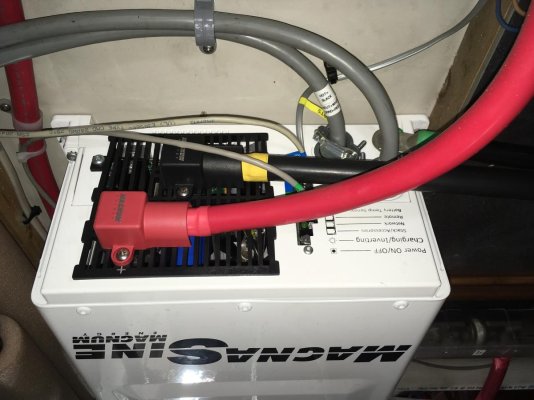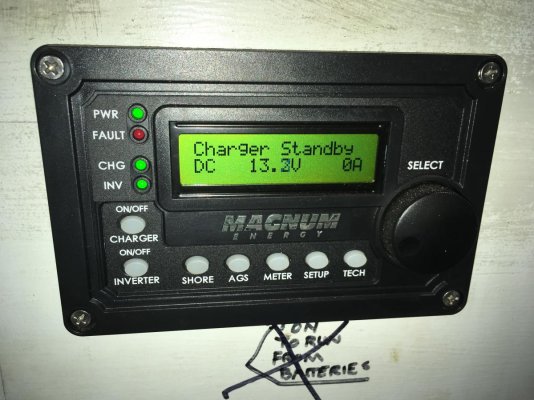In my Motorhome I have the same Magnum Charger/Inverter.
You have 3 panels in your first picture. The one on the right allows you to select input power from either genset or shore power. That selection, if either source is available, then goes to the other panels for distribution to the boat. Your handwritten labels "via inverter" suggest that every circuit on the two distribution panels is available either on shore power, genset power or Inverter (battery) power.
IOW, if genset or shore power are not available, the distribution panels will look to the Inverter for AC power, if it is enabled by turning on the Inverter at the Magnum panel, shown in the third photo. Without that selection being made, none of the AC loads will operate unless your genset or shore power are providing AC. If you leave the Inverter turned on at all times, your connected loads will not know which AC source, genset, Shore, Inverter, is supplying that power.
If (when) there is a failure of the Shore power supply, the Inverterr will automatically and seamlessly supply the missing power from the batteries, until they have been depleted, or the genset comes on (with Auto Gen Start this will be the first notice you get of the failure of shore power). Without AGS the Inverter will continue to use the batteries for AC until they can no longer supply. But I digress.
The Magnum panel allows you to turn the Charger on manually, when either Shore power or Genset power are available, and allows you to turn the Inverter on or off at any time, regardless of the presence or absence of an AC supply.
In my case, having seen my batteries depleted by the Inverter being left on while there was shore power available and thus used automatically when that source of power failed, I leave the Inverter function off unless I need it.
While charging, the Magnum panel is very useful to inform you of the state of charge, as it reports whether the charging is in Bulk, Absorption or Float, and the amperage being accepted at the batteries.




